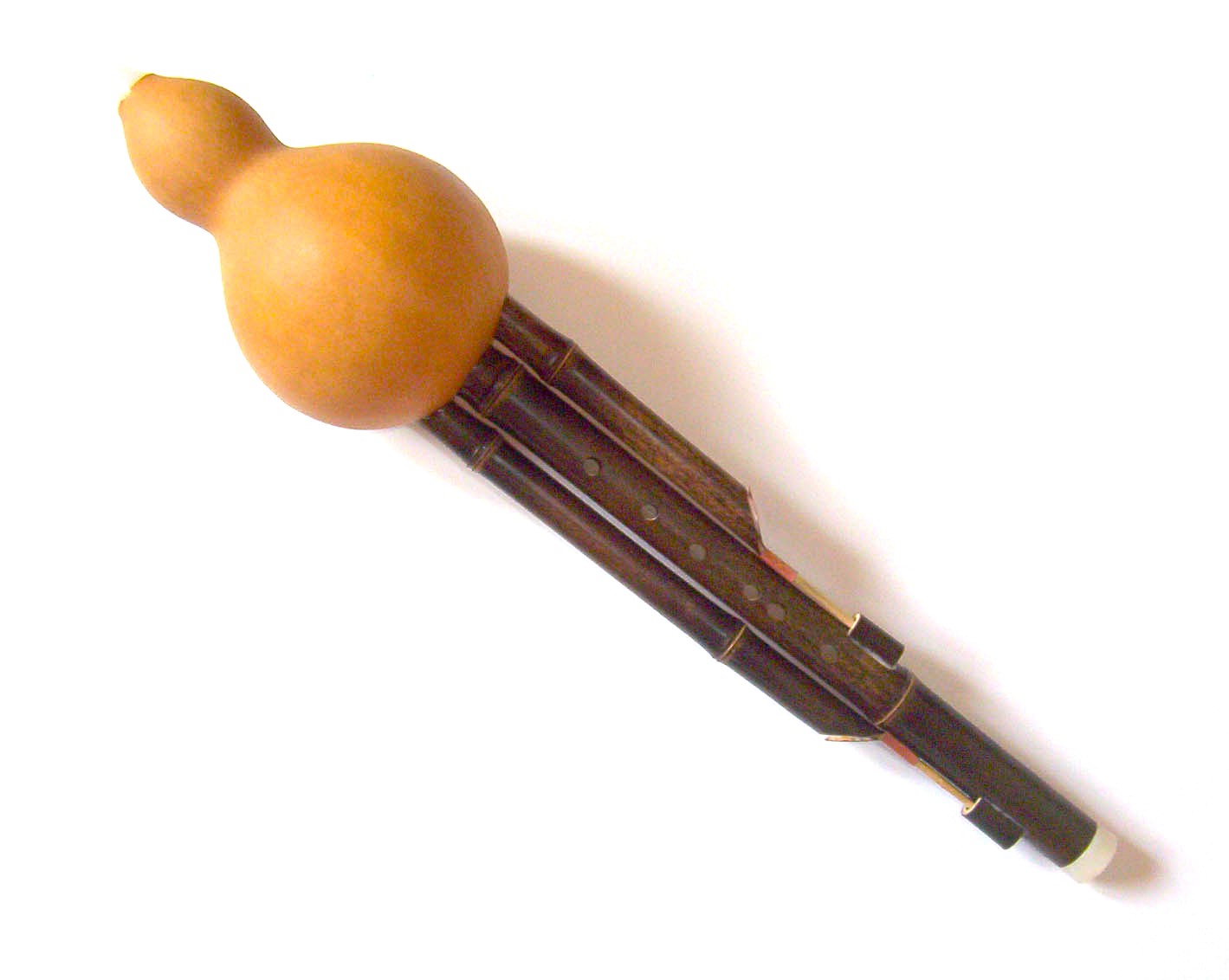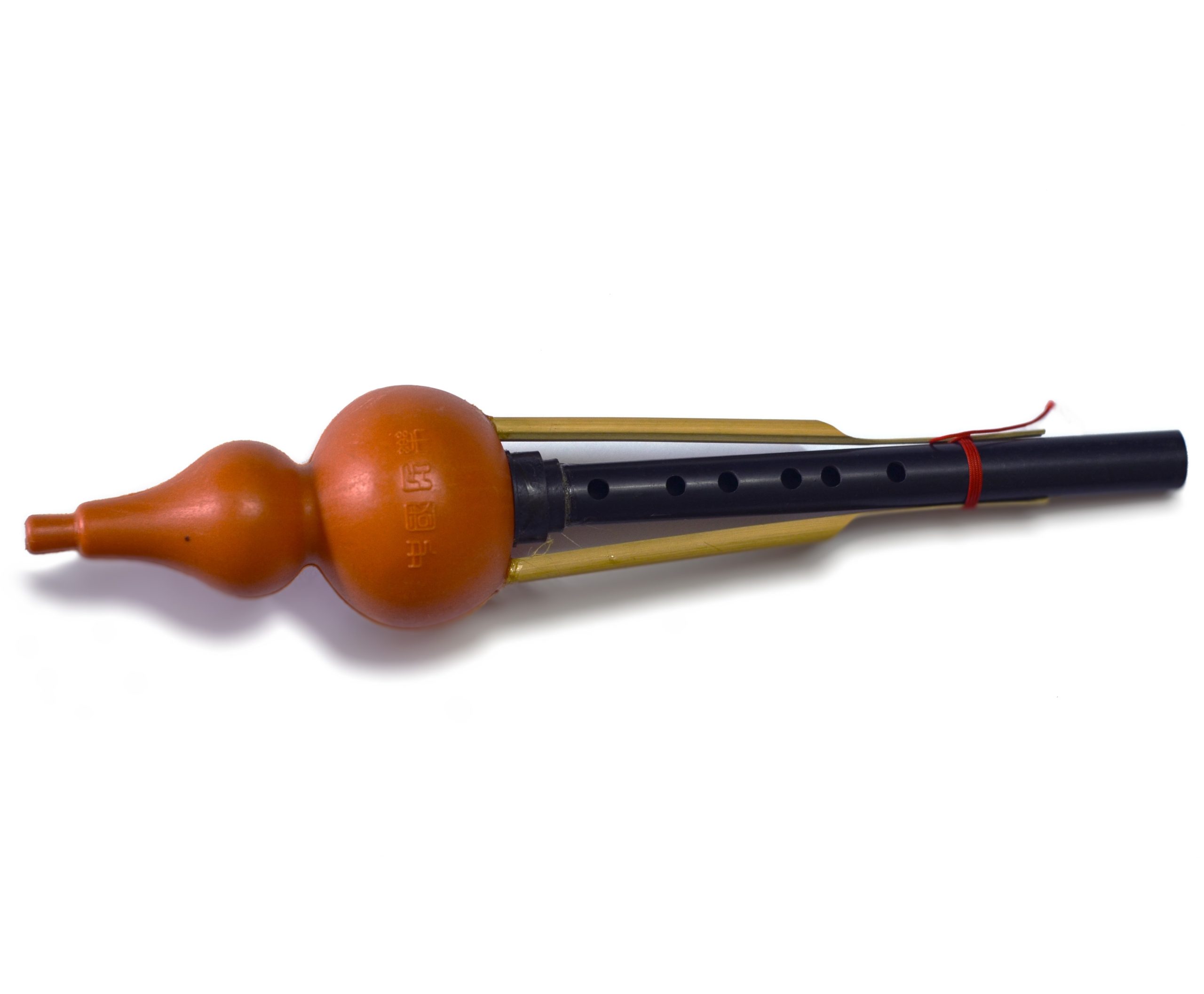Hulusi
Woodwinds
Asia
Between 0 and 1000 AD
Video
The Hulusi is a traditional Chinese free-reed wind instrument, predominantly played in the southwestern regions of China, particularly among the Dai, Yi, and Miao ethnic groups. Its haunting, flute-like timbre and expressive capabilities have made it a significant instrument in both folk music and contemporary compositions. The name “Hulusi” derives from the Chinese words “Hulu” (gourd) and “Si” (silk/threads, referring to its reed structure). Traditionally made from a gourd and bamboo pipes, the Hulusi has evolved over time, incorporating modern materials and techniques to enhance its playability and tonal range.
Historical Background
The Hulusi traces its origins to China, specifically to the southwestern regions where ethnic groups like the Dai, Miao, and Yi have long utilized it in their traditional music. It is believed to have been in existence for over a thousand years, with some historical evidence suggesting its use as early as the Tang Dynasty (7th-10th century AD). The instrument remained largely confined to minority communities until the 20th century when it gained recognition in mainstream Chinese music. Over time, it has also influenced and been adapted into musical traditions in neighboring countries such as Thailand, Myanmar, and Laos. Today, the Hulusi has reached global audiences, finding a place in world music, fusion genres, and even contemporary orchestral compositions.
Construction and Materials
The traditional Hulusi consists of three bamboo pipes inserted into a dried gourd, which acts as a wind reservoir. One of these pipes is the main melody pipe, while the other two may serve as drone pipes or remain decorative. Inside the melody pipe is a small free reed, usually made of metal, that vibrates when air is blown into the instrument. The main materials used in Hulusi construction include:
- Gourd: Serves as the wind chamber and amplifies sound.
- Bamboo: Used for the pipes, providing a warm, natural tone.
- Metal reeds: Typically made from copper or brass, responsible for sound production.
- Decorative elements: Traditional Hulusi often feature intricate carvings, tassels, and painted designs that reflect ethnic artistry.
In modern adaptations, materials such as resin and ABS plastic have been introduced to improve durability and tuning stability, making the Hulusi more accessible to a wider range of musicians.
Characteristics of the Hulusi
One of the most defining characteristics of the Hulusi is its distinctive tone, which is warm, gentle, and flute-like. It is often compared to the sound of a clarinet, but with a more soothing and breathy quality. The instrument’s design enables smooth legato passages and expressive vibrato, making it ideal for lyrical and emotive melodies. The use of drone pipes creates a harmonic background that enriches the main melody, adding depth and resonance. Its relatively simple fingering system makes it accessible to beginners while still allowing for advanced techniques such as overblowing, glissando, and ornamental trills.
Sound Production Mechanism
The Hulusi produces sound through the vibration of a free reed located inside the melody pipe. When the player blows air into the gourd chamber, the air pressure causes the reed to oscillate, generating a distinct pitch. The pitch is modified by covering and uncovering the finger holes along the pipe. The drone pipes, if engaged, provide a continuous harmonic background, enhancing the overall sonic texture. Unlike woodwind instruments that rely on embouchure adjustments, the Hulusi’s pitch control is primarily achieved through fingering techniques and breath pressure modulation.
Playing Methods and Techniques
Playing the Hulusi requires controlled breathwork and finger dexterity. The musician blows air into the gourd chamber, which distributes the airflow to the bamboo pipes. Key techniques include:
- Breath control: Essential for producing smooth, flowing melodies.
- Vibrato and ornamentation: Common in Chinese music to add expressiveness.
- Drone manipulation: Some Hulusi have a finger hole to activate or deactivate the drone pipes, altering the sound texture.
- Overblowing: Advanced players can use overblowing techniques to produce harmonics and extend the instrument’s range.
Because of its simplicity and ease of learning, the Hulusi is often introduced to beginners in traditional Chinese music education.
Cultural Significance
The Hulusi holds deep cultural value in southwestern China. Among the Dai people, it is often associated with romance and storytelling. Young men traditionally played the Hulusi as a form of courtship, using melodies to express their feelings to loved ones. The instrument also appears in festivals, dances, and religious ceremonies, symbolizing harmony and nature.
Beyond ethnic traditions, the Hulusi has gained popularity in modern Chinese music, and even in world music. Today, it is often used in film scores, fusion genres, and solo performances, showcasing its versatility beyond folk traditions.
Musical Applications and Genres
While the Hulusi is deeply rooted in Chinese folk music, it has been adapted into various musical styles, including:
- Traditional Chinese music: Often used in ensembles with instruments like the Erhu and Guzheng.
- Contemporary fusion: Artists blend Hulusi melodies with Western instruments such as the piano and guitar.
- Meditation and relaxation music: Its soothing tone makes it ideal for calm, ambient compositions.
- Jazz and experimental music: Some musicians explore unconventional scales and improvisations with the Hulusi.
Its distinct timbre and expressive nature allow it to fit seamlessly into different musical landscapes.
Variants and Modern Adaptations
Over time, the Hulusi has evolved, leading to variations that enhance its musical range and capabilities. Some of these adaptations include:
- Multi-pipe Hulusi: Featuring more than one playable melody pipe for harmonization.
- Keyed Hulusi: Equipped with mechanical keys to extend the range and improve chromatic capabilities.
- Electronic Hulusi: A digital version that can be connected to MIDI devices, expanding its use in electronic music production.
These innovations have made the Hulusi more versatile and adaptable to different musical contexts.
Learning and Notation
The Hulusi is often taught using jianpu (numeric notation), a simple and effective system widely used in Chinese music. It can also be played using Western staff notation, making it accessible to musicians trained in different traditions. Due to its straightforward fingering system and limited range, beginners can quickly learn to play simple melodies, making it a great entry-level wind instrument.
Notable Performers and Global Influence
In recent years, the Hulusi has attracted international attention. Notable performers such as Zhao Songting and Zhang Zhiyong have helped popularize the instrument through recordings, performances, and educational efforts. Outside of China, musicians worldwide have incorporated the Hulusi into their compositions, expanding its influence beyond traditional Chinese music.
The Hulusi is a unique and culturally rich instrument that has stood the test of time, evolving from an ethnic folk instrument to a globally recognized musical tool. Its warm, expressive tone, ease of learning, and adaptability make it an excellent choice for both traditional and contemporary music. Whether used in solo performances, ensembles, or modern fusion projects, the Hulusi continues to captivate audiences with its distinctive charm and haunting melodies. As more musicians explore its possibilities, the Hulusi’s legacy is sure to grow, bridging cultural gaps and inspiring new generations of players worldwide.
FAQ
How is the Hulusi constructed?
The Hulusi consists of a gourd wind chamber with three bamboo pipes. The center pipe has finger holes for melody, while the side pipes may produce drones. It uses a free reed to create its distinct sound. Traditional versions are handcrafted, often decorated with carvings.
What is the origin of the Hulusi?
The Hulusi originates from China, specifically among the Dai and other ethnic minorities of Yunnan province. It has been played for centuries as a folk instrument. Its design is inspired by natural elements, with the gourd symbolizing harmony. Over time, it spread to Southeast Asia.
What compositions feature the Hulusi?
Hulusi compositions often feature soft, flowing melodies mimicking nature sounds. It is used in traditional Chinese and Dai ethnic music, as well as contemporary fusion pieces. Famous compositions include "Phoenix Tail Bamboo Under the Moonlight" and "Soul of Hulusi." Modern composers integrate it into world music.
 Links
Links
References
Other Instrument
Categories



















